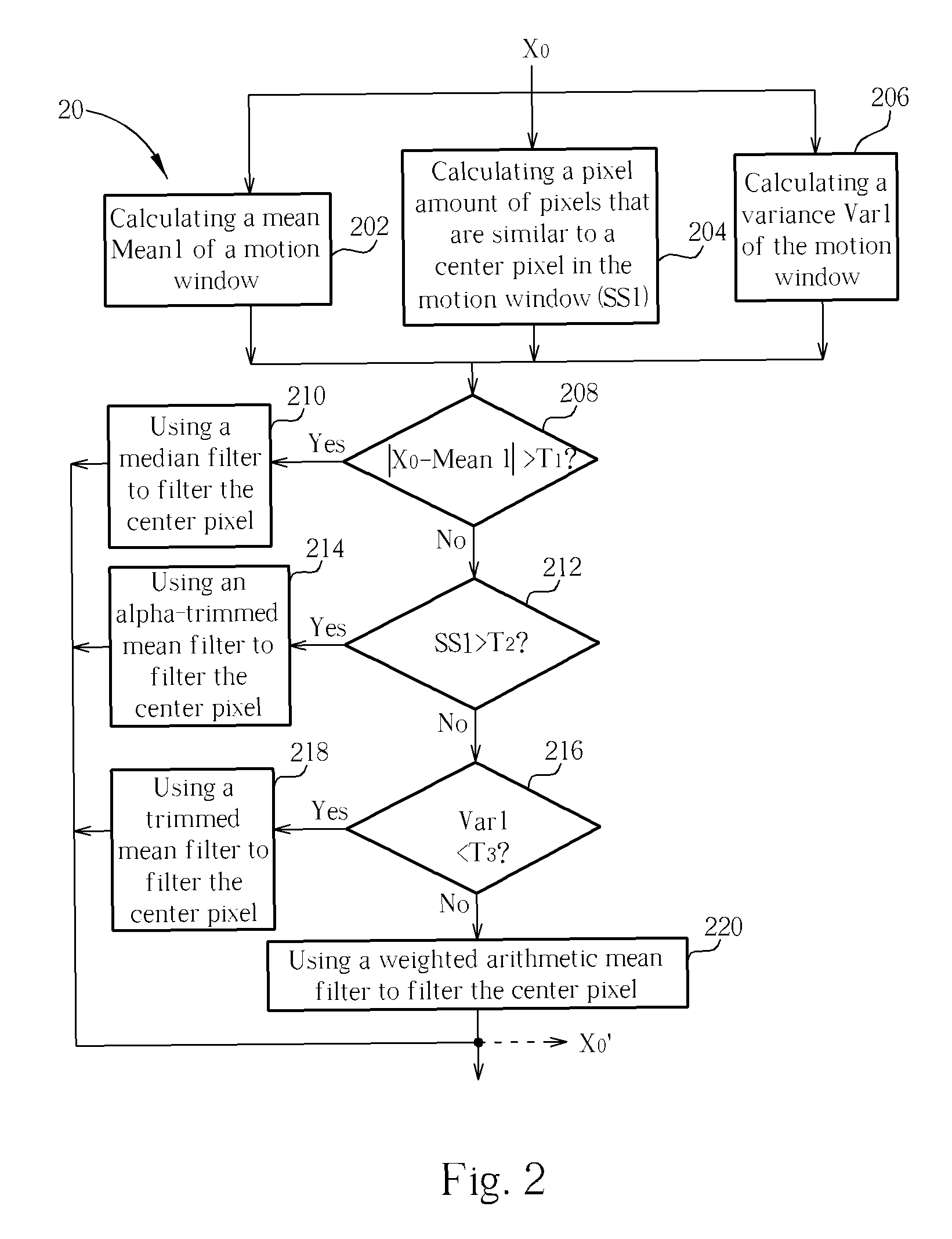Video noise reduction method using adaptive spatial and motion-compensation temporal filters
a technology of temporal filter and adaptive spatial compensation, applied in the field of video noise reduction, can solve the problems of principal sources of noise in digital images, no images are absolutely perfect, and noise in the generated images
- Summary
- Abstract
- Description
- Claims
- Application Information
AI Technical Summary
Benefits of technology
Problems solved by technology
Method used
Image
Examples
Embodiment Construction
[0040]Some concepts of the present invention have already been published in the proceedings of conference, as described below: (Thou-Ho (or Chao-Ho) Chen), Chao-Yu Chen and Tsong-Yi Chen, “An Intelligent Video Noise Reduction Method Using Adaptive Spatial and Motion-Compensation Temporal Filters”, 2006 IEEE International Conference on Cybernetics&Intelligent Systems (CIS), Bangkok, Thailand, Jun. 7-9, 2006. (pp. 341-346).
[0041]The present invention provides a video reduction method using adaptive spatial and motion-compensation temporal filters. The present invention can be seen in several levels. The first introduces approximated motion compensated spatiotemporal filtering. The next is an algorithm introducing a temporal filter for reducing noise and related filters. Finally, temporal relationships of a video, correct motion estimation, and compensation of image sequences after spatial filtering are fully employed. The temporal relationships can be improved due to motion compensati...
PUM
 Login to View More
Login to View More Abstract
Description
Claims
Application Information
 Login to View More
Login to View More - R&D
- Intellectual Property
- Life Sciences
- Materials
- Tech Scout
- Unparalleled Data Quality
- Higher Quality Content
- 60% Fewer Hallucinations
Browse by: Latest US Patents, China's latest patents, Technical Efficacy Thesaurus, Application Domain, Technology Topic, Popular Technical Reports.
© 2025 PatSnap. All rights reserved.Legal|Privacy policy|Modern Slavery Act Transparency Statement|Sitemap|About US| Contact US: help@patsnap.com



